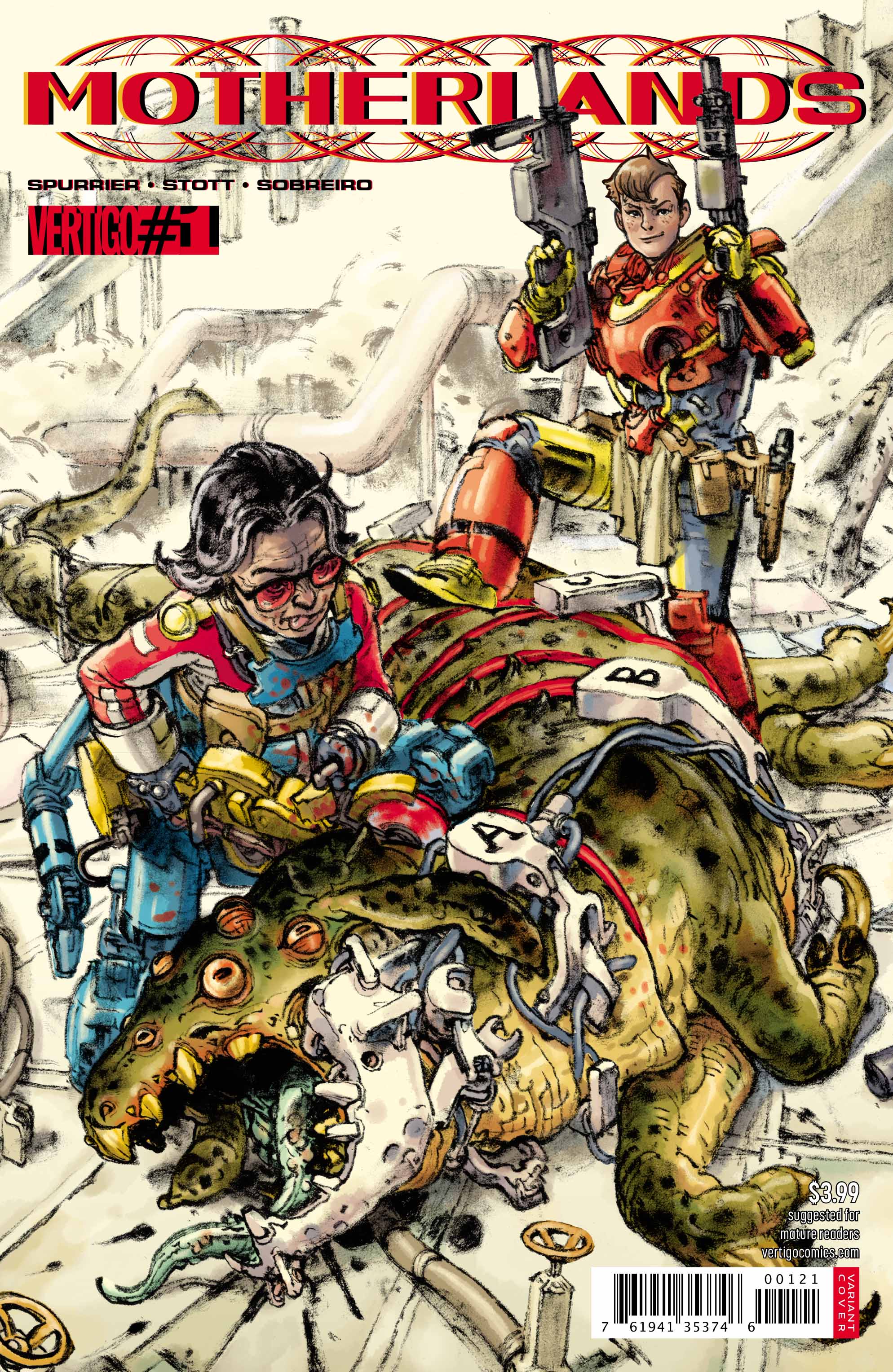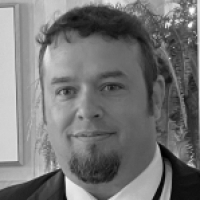How Motherlands Mixes Family and Superstring Theory
Vertigo's Motherlands takes mother-daughter conflict to infinite worlds.
Motherlands has a pitch that is so Simon Spurrier that you can recognize him in it immediately: a bounty hunting woman teams up with her mother to hunt the multiverse for one big score. Family drama ensues.
Spurrier, the writer behind X-Men: Legacy, Angelic, The Spire and Six-Gun Gorilla, has a knack for mixing weird science and touching emotion. His art partner on Motherlands, Rachael Stott, is no stranger to weird, far-flung sci-fi, having drawn the past two years of Doctor Who comics and Star Trek/Planet of the Apes. The new series hits shelves on January 31st, and we had a chance to chat with Spurrier and Stott about the new book: where it comes from, where it’s going, and what you’ll be excited about.
Den of Geek: Si, what comes first when you’re writing, the ridiculous and inventive high concept, or the quiet, emotional, human moment?
Simon Spurrier: It varies from project to project, honestly. Generally speaking, I don’t “get” ideas, in the bolt-from-the-blue sense, so much as grow them or accrete them from a formless mass of interests, themes and moments.
With Motherlands, the inception was a little more precise, in that I started with a killer idea for a twist then let my brain go for a wander to see how it might work in context. I quickly realized I was unconsciously trying to do something sly: telling a poignant story about a strained parent/child relationship but disguising it as my favorite sort of insane, anything-goes Eurocentric sci-fi. The two halves of that equation are quite neatly balanced within the idea that kicked it all off, which – I’m proud to say – bridges theme, character and setting. But, alas, I can’t say much about it, because it really is a doozy of a twist.
In the meantime, I’ve done my usual trick – it’s a joy, honestly – in creating a functional (or possibly dysfunctional) world for the story to occupy, which we then drop into a position of secondary importance behind all the characterful, plotty, shooting-people-in-the-face-with-a-fucking-enormous-lasergun stuff that really matters.
Short version: building worlds is easy; doing so then being casual enough about it to instead concentrate on the other stuff – that’s the real trick.
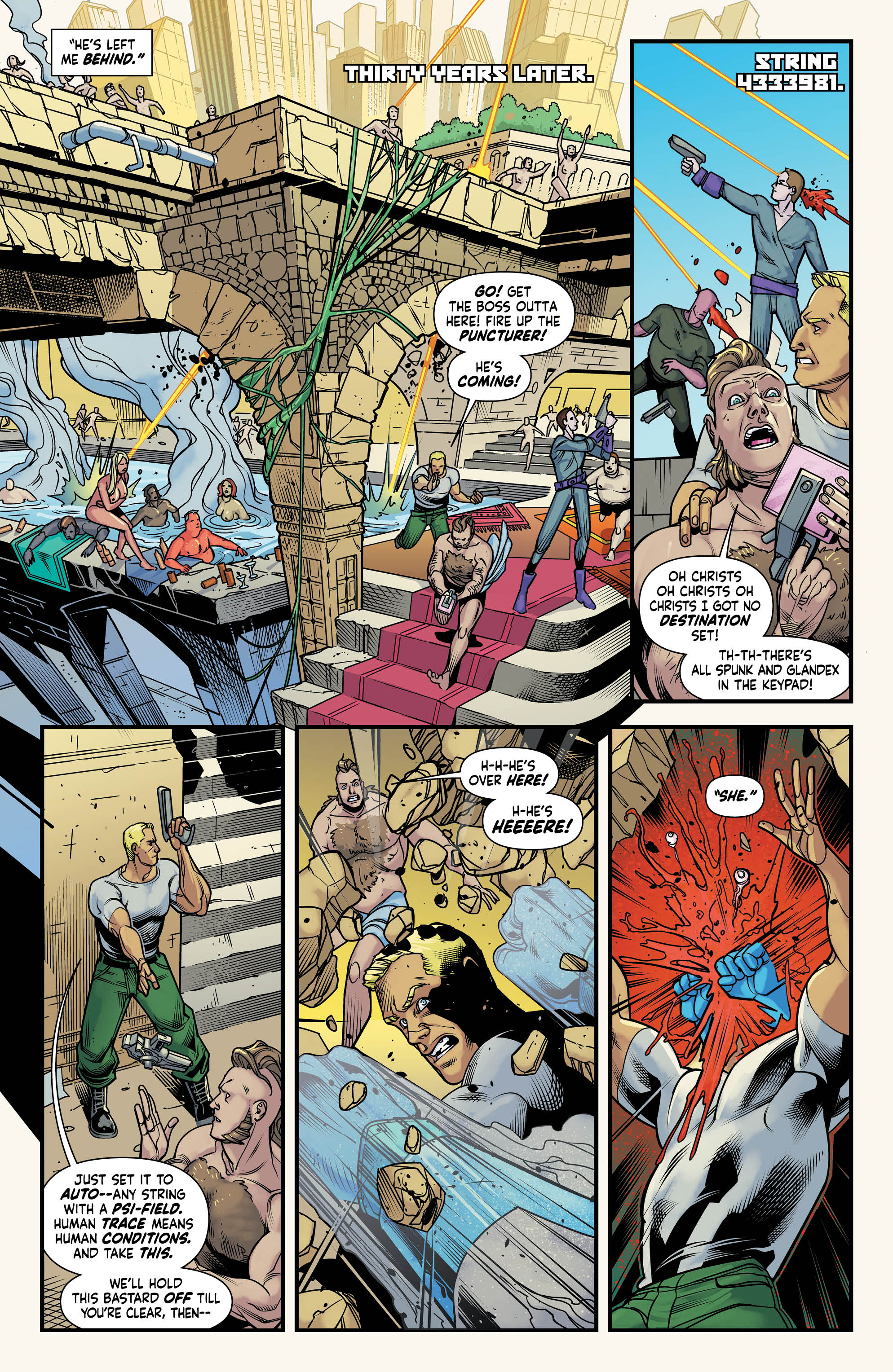
Tell me a little about the multiverse that Motherlands inhabits.
Spurrier: Well, we’re taking a bit of a refreshing approach to the Many Worlds theory. Rather than an endless parade of boring alternate realities where – I don’t know – the Roman Empire never fell, or the Vikings founded America, or blah blah blah, instead we’re being a bit more holistic. If there are infinite earths then the vast majority of them will have deviated from our own in massive ways, over the course of 4.5 billion years. Airless rocks, irradiated wastelands, meteor-pummeled hells. Even the ones with life are likely to be unrecognizably alien, and quite probably uninhabitable.
So, let’s say someone’s invented a gadget to allow trans-dimensional travel. (They’re called “puncturers”, in our world, and pretty much everyone’s got one.) The smart approach to jumping parallels (“strings”, as we call them) would be that you can only safely visit those other worlds where something akin to human life has evolved. And since the only way to detect that is to look for something with a vaguely recognizable brain pattern, psychic technology is the mainstay of the network. In other words, Motherlands takes place in this wonderful web of insanely variable realities, linked together by trans-dimensional telepathy. It’s officially called “the trawl” — but unofficially known as The Clusterfuck.
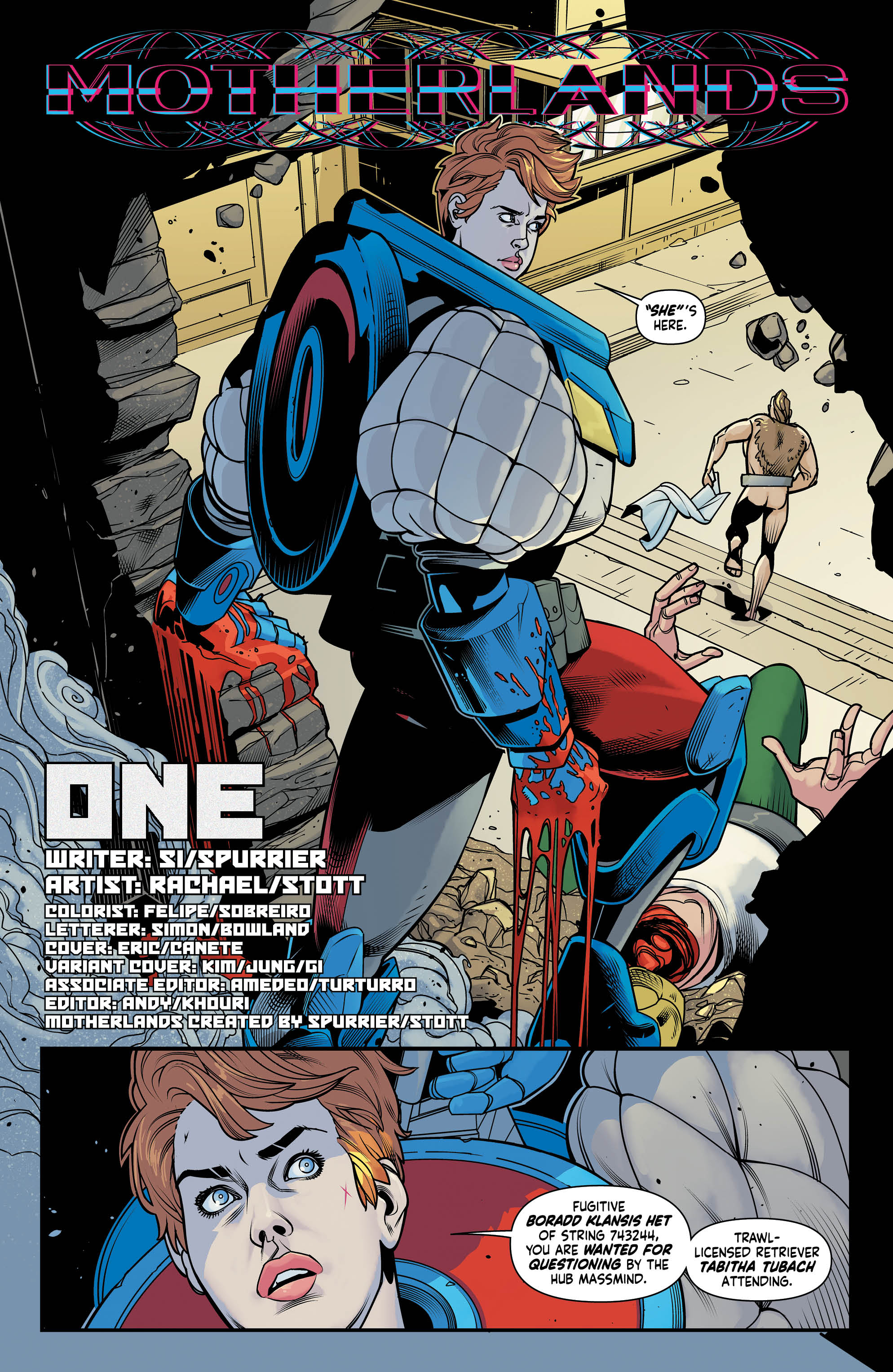
That less-than-generous label is due to one of the other obvious upshots of an infinite number of alt cultures all getting together to share ideas. See, no two versions of humanity are quite alike. We’ve had several million years for the Homo genus to deviate, after all. So not only do alt humans all look very different to us, but each world has developed its own primary forms of technology. Electrical, nuclear, clockwork, fungal, biomechanical, amoebic, psychic, no two societies are the same.
Thirty years after all these worlds started linking up, now the Trawl is in a state of chaos. Unregulated rogue scientists and techno-anarchist terrorists are running amok, hiding out on frontier strings, hybridizing technologies that were never meant to co-exist. As one guy in Issue #1 puts it, you just can’t trust folks to play nice in an infinite sandpit.
The main upshot, for our story, is that we’ve got a billion different worlds with a billion different local police jurisdictions, and it’s super easy for fugitives to just jump from one to the next. So, the trawl has created “the Retrievers”: an agency of bounty hunters (“professional bastards”) to plug the gaps.
Both our main characters are retrievers. The difference being that Selena was the best and most famous of them all, 30 years ago when it was a glamorous career with cameras following every hunt, while her daughter Tab is a cold and pragmatic professional in a world where nobody gives a fuck.
Their relationship – both in the present and the past – is what forms the core of our tale.
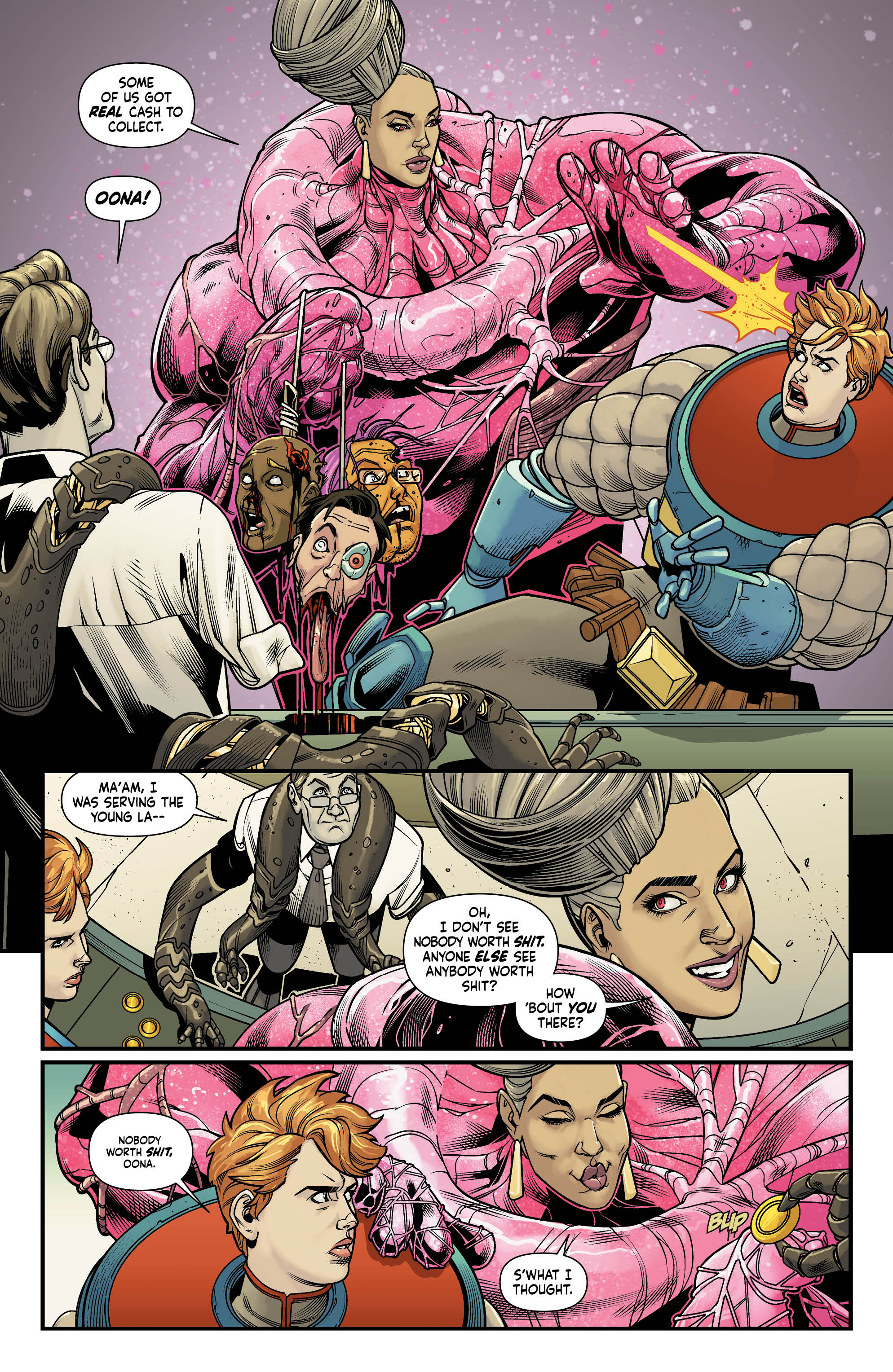
How much are the two of you working with Felipe [Sobreiro, colorist on Motherlands] and Simon [Bowland, letterer] on the design of the overall book? The shifting color palette for each universe and clipped word balloons as the characters jump between worlds are little touches, but they are wonderful additions to the storytelling flow.
Spurrier: We picked these guys specifically for their brilliance and “rightness” for this gig, basically – they take great direction, but then always go a step further and make the book greater than the sum of its parts. That also goes for Eric Canete with his mind-blowing covers, and Emma Price with her peerless logos and cover treatments. It’s one hell of an orchestra, honestly, and Vertigo’s Andy [Khouri] and Amedeo [Turturro] are up there like a couple of feverish geniuses on the podium with their editorial conductors’ batons.
Rachael: Designing the worlds – do you get direction on the hook of each parallel universe, do you come up with it before, or do you just wing the background stuff
Rachael Stott: Si’s scripts are fabulous because what he does is establish the world to you in amazing detail, without it being a strict ‘panel description’. Like he’s just showing you around the place, like your tour guide with loads of local knowledge and a great vocabulary. For example he’ll describe the local population, their clothes, what they are drinking, what are their shoes made of and so on, so as you’re reading it you get an incredibly powerful sense of the environment, but the actual visual depiction is down to you- so like an artist’s dream situation really.
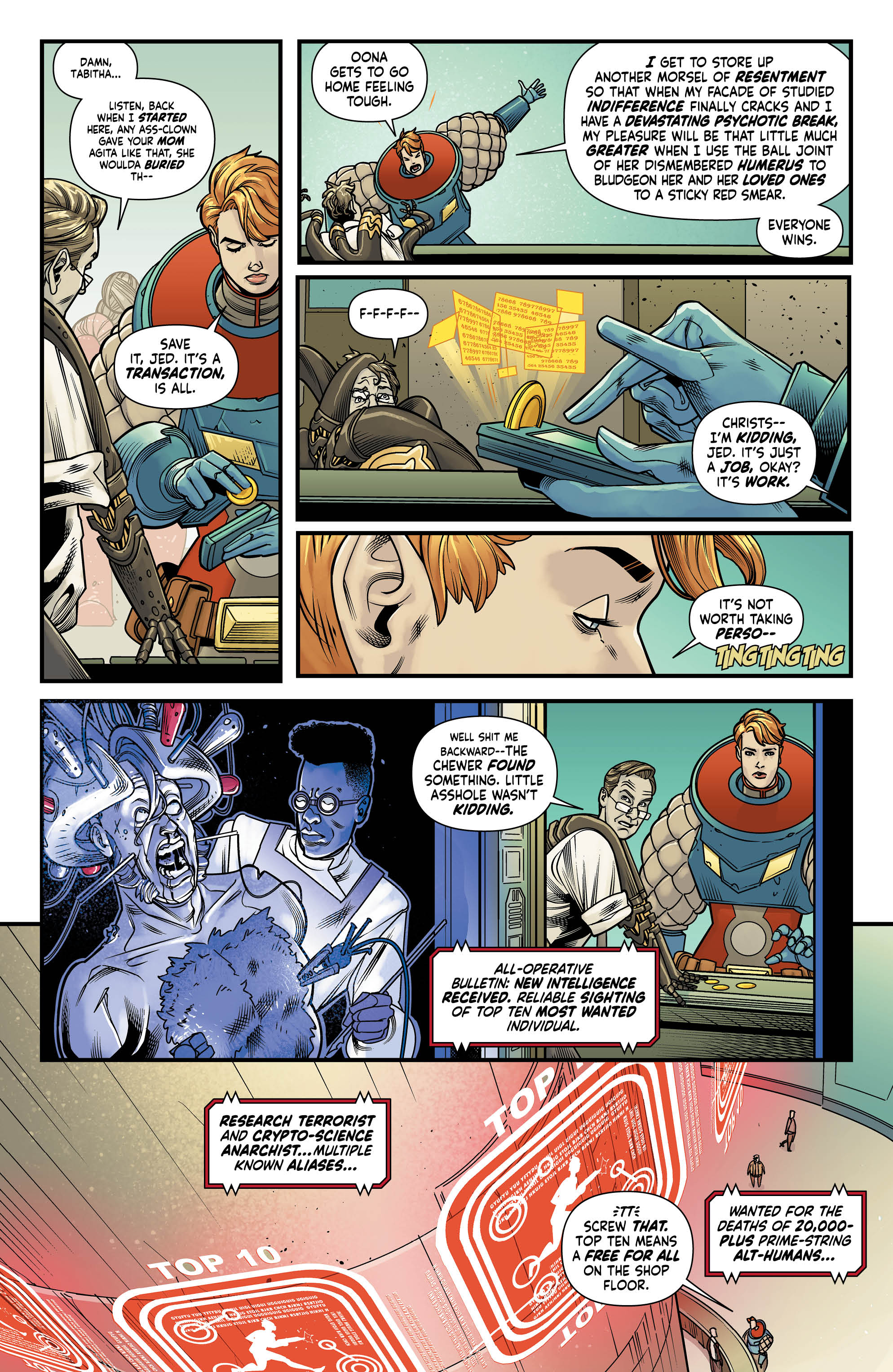
What’s the most exciting thing coming up in issue 2 for each of you?
Spurrier: I mean, I should probably say it’s the amazing emotional beats, or Selena’s signature creative cursing, or the clever trick our girls play using nothing but a teaspoon, or the big fight at the end… but honestly? The guy with a hundred dongs is pretty hard to beat.
Stott: Can’t speak for issue 2, but in 3 Si requested ‘The most glorious DPS you’ve ever seen’ and I’ve definitely given it the old college try.
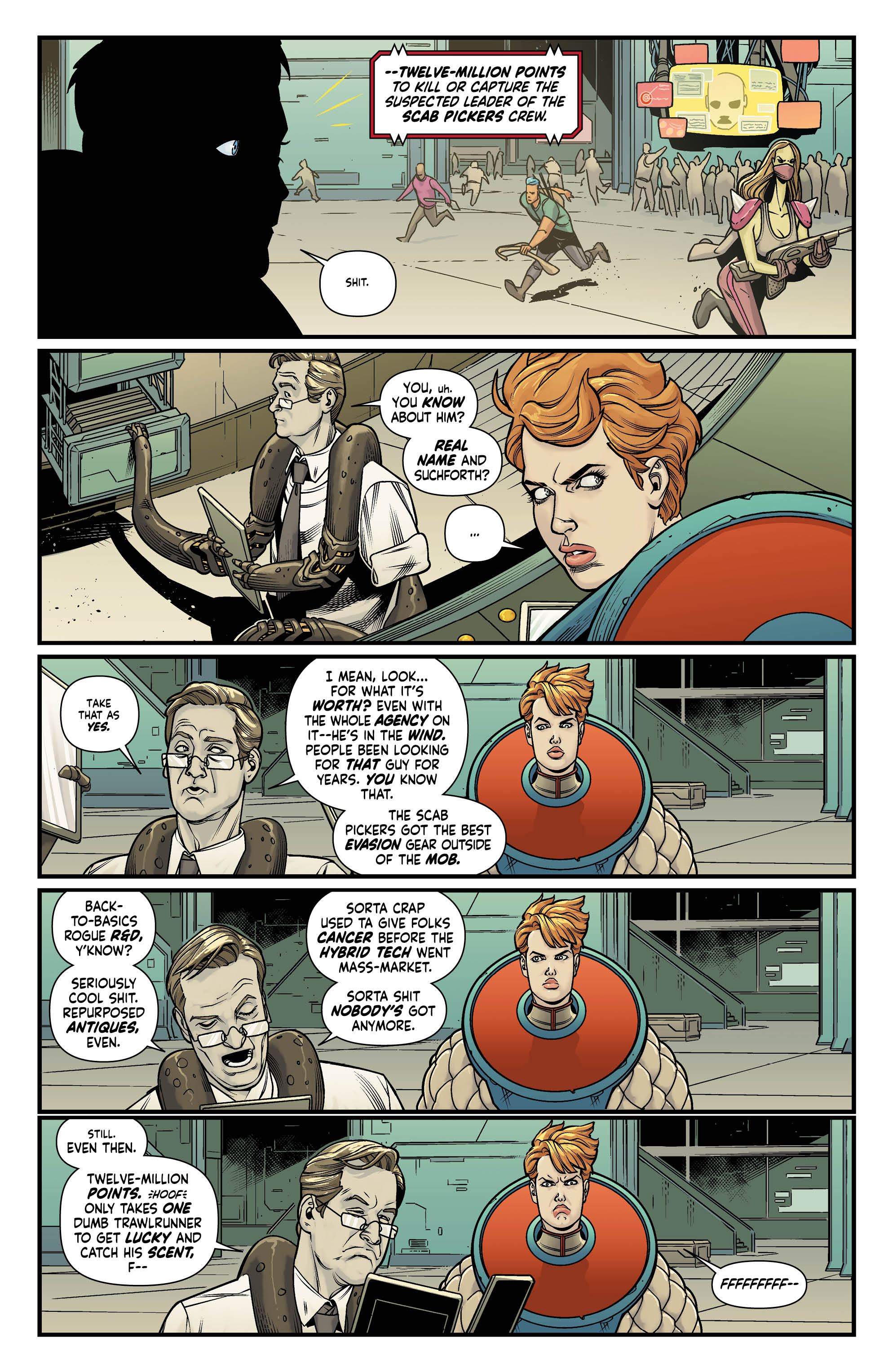
This is a miniseries, but it’s got a pretty expansive world around it. Is Motherlands something you both might come back to after the initial story is finished?
Stott: I’m so used to working on ongoing properties that I sort of keep forgetting it’s only a limited series- but that’s the problem- you sort of fall in love with the characters because Si writes them so relatable, and realistic, and so the idea that I might never see them again after the end is really sad. You draw anyone’s nose 400 times and you’re bound to get attached. So hopefully we can revisit them in the future. I think I could draw a hundred issues of Tab and Selena driving each other crazy and not get bored.
Spurrier: Never say never, but a story needs an ending or it’s not worth telling. It’s kind of like I hinted above: you can always tell if a creator is more in love with the world than the story — usually because it’s a fucking tedious book to read. If we continued with, or came back to Motherlands, it would have to be because we had new stories waiting to be told, rather than just to keep poking around the world we made in self-congratulation.
I have some ideas, sure, but that’s in a “wait and see” mental file at the moment.
(Sidenote: I think in today’s market publishers should be commended for putting out serials. Without getting into it too far – this is a long pub rant – our industry inherited a really arse-backward set of inefficiencies and diminishing returns via the distribution monopoly, which punish retailers for taking risks and reward steady-as-she-goes ongoing books. Serials like Motherlands are IMO the lifeblood of what makes comics great – experimental, unique, bold, uncompromising, poignant and mercilessly imaginative – and they’re truly worth supporting.)
Motherlands #1 hits comic shops on Wednesday, January 31st. Check it out!
